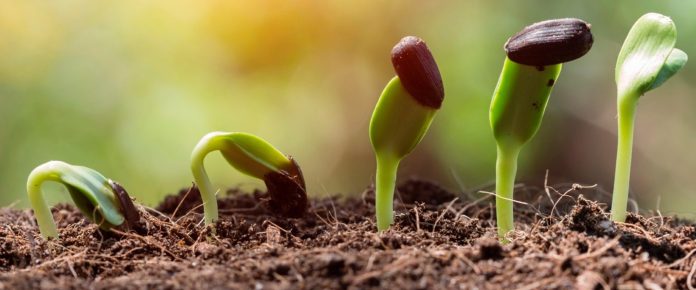by Carolyn, Calgary’s Home Gardener Helper
Winter is a great time to start seeds for your summer veggie and flower gardens. Some require long periods of germination and indoor warmth to be ready for spring planting, so it’s a good time to get them growing!
Purchase seeds from a reputable seller or use ones you’ve collected from previous seasons. Seeds grown locally are better than ones shipped from far away because they are more suited to our climate.
Next, consult a local seed-starting chart to know when you should start. Some like lettuce, peas, and radishes, are cool season crops and do not require starting indoors. Wait until spring and direct sow them into your garden or planters.
You will need a seed starting mix, seed trays, a dome lid, a heat mat (optional), and a light source, like a grow light, for best results. Plant your seeds into an evenly moist starting mix according to directions. Place the trays onto the heat mat (or in a warm spot) and put the dome lid over. Wait for them to germinate. Once your seed sprouts, remove the lid and keep them under the lights. Keep them lightly watered and transplant into egg cartons or small peat pots as they continue to grow.
Fruit-bearing plants like squash, cucumbers, and zucchini, can be started indoors but don’t seed until four to six weeks before the last frost date (after May long weekend in Calgary). While it may be tempting to start them early, they will struggle and not adapt well to outdoor growing once they are transplanted. It is best to wait until March for these guys.
Plants like peppers, strawberries, and ground cherries can be started in February. These seeds require longer periods of germination and are slow growing. Ground Cherries, also called Husk Cherries, are an easy-to-grow garden fruit.
Tomatoes are best started at the end of March. They grow quickly and should be planted outdoors under a cold frame or into a covered VegTrug on your deck in late April/early May.










